Aviation Safety Monitor Weekly Report for the Week Ending October 26, 2024
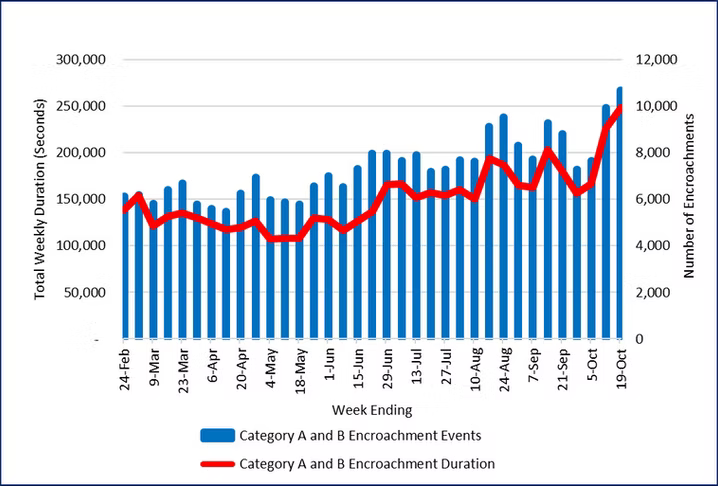
Welcome back to the Weekly Aviation Safety Report. Every Monday Robust Analytics reports on safety margins at 26 United States airports. With this Aviation Safety Monitor Weekly Report, Robust Analytics offers the aviation community timely assessments of changing safety margins and safety-related events. Dates and times are tracked in UTC and the week ends at midnight every Saturday. This week’s report includes data through 2400 UTC on October 26, 2024.
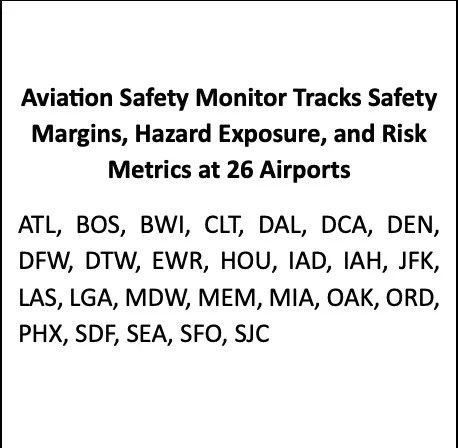
For New Readers: Please read our article “Did Safety Degrade in the National Airspace System in the Winter of 2022-2023?” that applies our methods and data to examine whether safety margins decreased during the events of winter 2022-2023.
The Aviation Safety Monitor measures safety margins by estimating the frequency, duration, and severity of buffer encroachments. Our paper “How Do We Measure Safety Margins?” provides a detailed description of the methods and data. That article can be found here https://www.robust-analytics.com/measure on the Robust Analytics website.
Weekly Safety Margin Update. This week we revise the weekly data chart to report buffer encroachment durations by separation conformance category. This added detail will be more informative to readers, as the Category PE and C buffer encroachments are highly affected by meteorological conditions. In fact, by definition during visual meteorological conditions there are no buffer encroachments. The more severe encroachments in Category A and B provide a better indicator of changing safety margins.
Figure 2 reports the weekly total durations for the two conformance category groupings. The Category PE and C weekly durations bounce around with no obvious trend over the past eight months, primarily reflecting changes in meteorological conditions. The Category A and B durations report a very different story, with a strong upward trend since May. The Category A and B durations for the week ending October 26 increased 9.9 percent after increasing 35.6 percent the previous week. The daily duration average for October is 35 percent above that average for September and 2.3 times higher than the low weekly value for May 4. The encroachment duration metric is at the highest recorded value since the Weekly Safety Monitor began reporting in February.
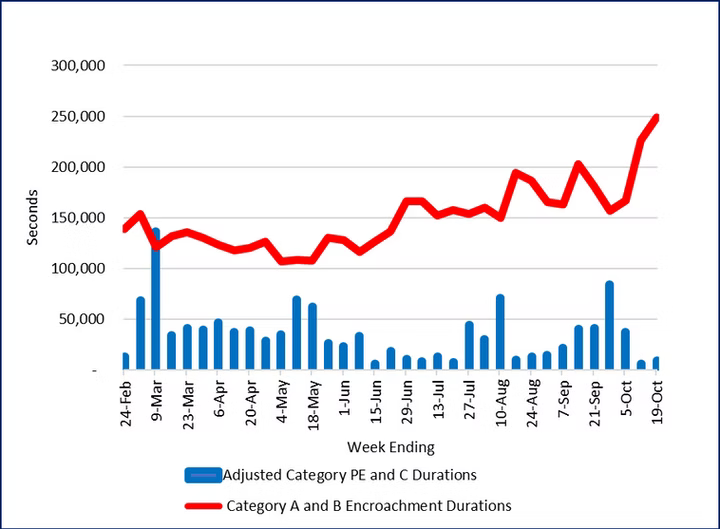
Figure 3 displays the typical time of day pattern that we observe in the data, as encroachment events are highly correlated with traffic density. Even after aggregating the data over 17 metroplexes operating in three time zones the time of day pattern remains prominent. While there is only a handful of hourly reports above the 90th percentile, there are several reports each day above the 75th percentile.
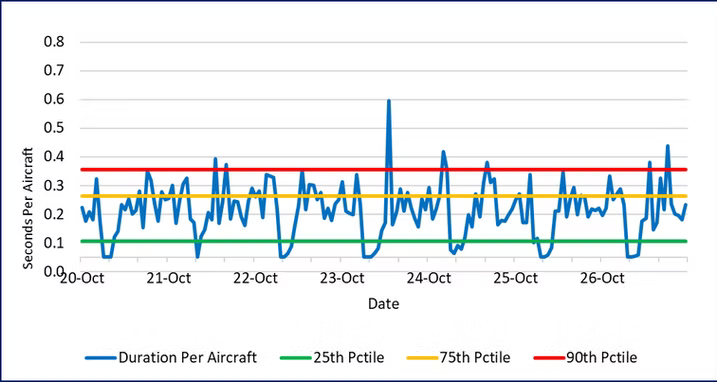
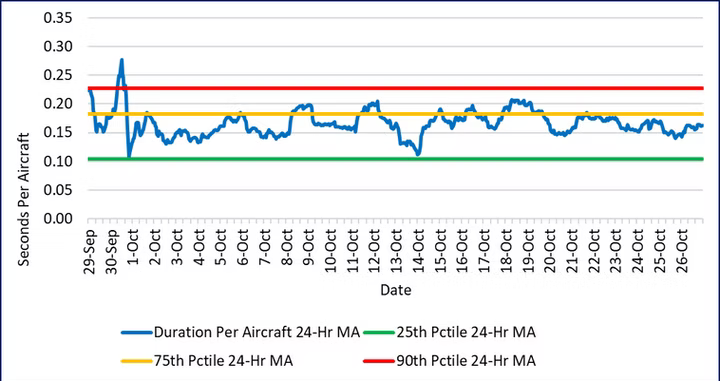
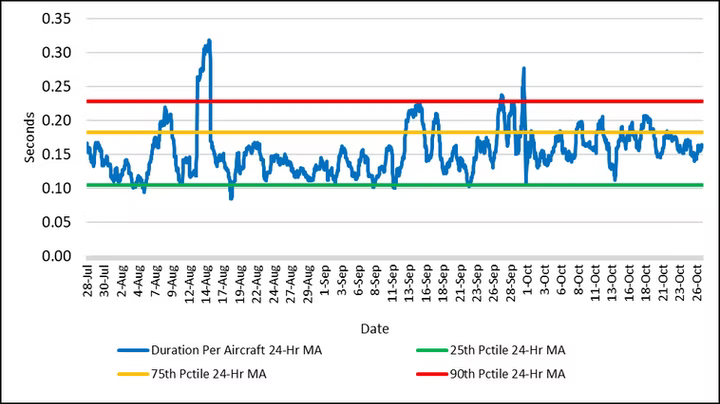
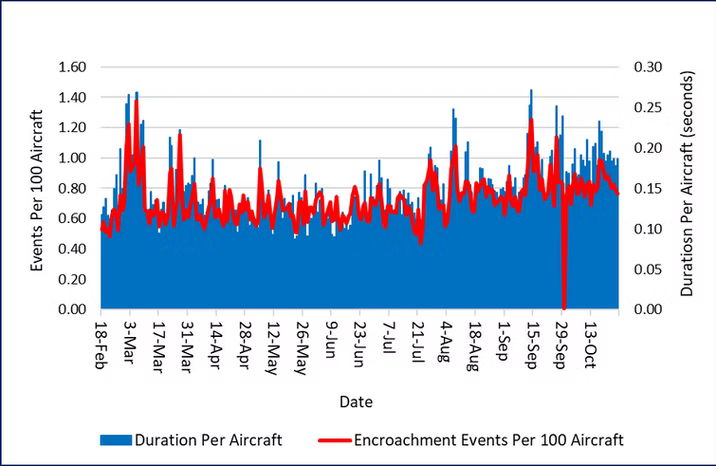
The Aviation Safety Monitor summarizes output from Risk Tracker, the Robust Analytics in-time terminal airspace hazard and safety metrics monitoring system.
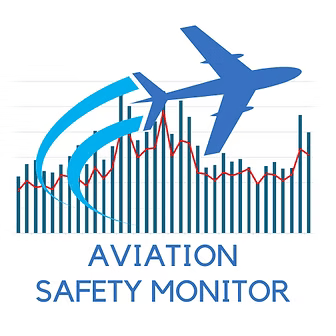
About the Aviation Safety Monitor
The Aviation Safety Monitor is a service provided by Robust Analytics to deliver timely information on terminal area safety in the National Airspace System (NAS). The safety monitoring and prediction technologies were developed by Robust Analytics over the past several years. Partial funding was provided by the NASA Small Business Innovation Research Program and the NASA System Wide Safety Project.
The Aviation Safety Monitor provides quantitative estimates of safety margins at 26 airports in 17 metropolitan regions in the United States. This information complements data on several safety-related events that are published elsewhere, with the FAA’s Runway Incursion Statistics website a good example. However, the available safety information can be misleading if it only reports the frequency of violations with no insight into how safety buffers may vary minute-to-minute and day-to-day. The Aviation Safety Monitor aims to provide this insight every week.
